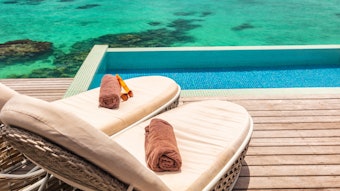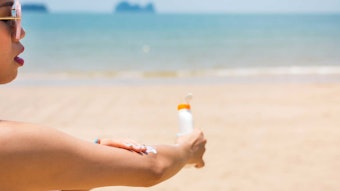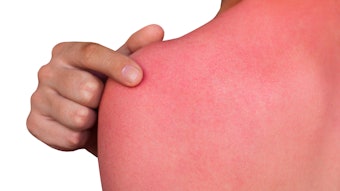Topics for this column are selected one of two ways: either something important has happened such as a new regulation, or a number of phone calls have been received on a subject. The latter, while a close second to the first, indicates the need to more fully explain the complex issues of regulation. Based on a number of recent phone calls, this column will discuss titanium dioxide (TiO2).
TiO2 Chemistry
TiO2 is the most frequently used ingredient in cosmetics after water (aqua), fragrance (parfum), methylparaben, propylparaben, glycerin and propylene glycol, according to the U.S. Food and Drug Administration’s (FDA) Voluntary Cosmetic Registration Program. It is a popular UV filter in sizes ranging from pigment grade, which the FDA originally approved in 1978, to micro-size grades and nano-size grades. It is the whitest pigment known and occurs in ores such as ilmenite (most common), leucoxene, rutile and anatase. Ilmenite is gray-black in color and also contains iron oxides, magnesium and manganese. No naturally occurring minerals containing titanium are allowed in personal care products, so all TiO2 is synthetically produced.
There are two common methods to produce TiO2—the sulfate process and the chloride process. Almost all grades in the cosmetic industry are produced with the chloride process, which results in a whiter raw material as opposed to the yellowish cast that is typical of the sulfate method. In the chloride process, the crude ore containing at least 70% TiO2 is reduced with carbon and oxidized with chlorine to give titanium tetrachloride. This titanium tetrachloride is then distilled and re-oxidized in a pure oxygen flame or plasma at 1,500–2,000°C to give pure TiO2 while also regenerating chlorine.
TiO2 is produced in two crystal forms, anatase and rutile, which are tetragonal crystals. Rutile is preferred in the cosmetic industry, as it has a higher refractive index (2.605) than anatase (2.561). It is also more stable than anatase, especially at higher temperatures.1
TiO2 Regulation
There are several specifications required for using TiO2 in the U.S. and European Union (EU). The major difference is the EU allows alumina and silica to be part of the material. They also allow higher levels of trace metals in the EU.
U.S. requirements: When used as a colorant in the U.S. (21CFR73.575 and 21CFR73.2575), the FDA mandates that the color additive is synthetically prepared TiO2 and free from admixture with other substances. In addition, it should contain: ≤ 10 ppm lead (Pb), ≤ 1 ppm arsenic (As), ≤ 2 ppm antimony (Sb) and ≤ 1 ppm mercury (Hg). Also, the loss on ignition at 800°C and after drying for three hours at 105°C should be ≤ 0.5%. The material should have ≤ 0.3% water-soluble substances and ≤ 0.5% acid-soluble substances. In addition, again after drying for three hours at 105°C, the resultant TiO2 should be present at 99.0% or greater. Lead, arsenic and antimony should be determined in the solution obtained by boiling 10 g of TiO2 for 15 min in 50 mL of 0.5 N hydrochloric acid.
When used as a UV filter in the U.S., the United States Pharmacopeia (USP) states: Titanium dioxide contains NLT 99.0% and NMT 100.5% of titanium dioxide (TiO2), calculated on the dried basis. If labeled as attenuation-grade, then titanium dioxide contains NLT 99.0% and NMT 100.5% of TiO2, calculated on the ignited basis. Attenuation-grade material may contain suitable coatings, stabilizers and treatments to assist formulation. Note—If labeled as attenuation-grade, then all tests and assays are conducted on uncoated, untreated material. For UV attenuation-grade, the test for Loss on Drying does not apply. The FDA requires the content of lead to be NMT 10 ppm (µg/g), that of antimony to be NMT 2 ppm (µg/g), and that of mercury to be NMT 1 ppm (µg/g) (21 CFR 73.1575).
For the identification of TiO2, the USP specifies that a sample at 500 mg should be analyzed using the following method. Add 5 mL of sulfuric acid to the Sample, and heat gently. After fumes of sulfur trioxide appear, continue heating for a minimum of 10 s. Cool the suspension, and cautiously dilute with water to 100 mL. Filter, and to 5 mL of the clear filtrate, add a few drops of hydrogen peroxide TS. The color immediately resulting should be yellow-red to orange-red.
To assay the sample TiO2, the USP specifies: Transfer 300 mg of titanium dioxide to a 250-mL beaker. Add 20 mL of sulfuric acid and 7–8 g of ammonium sulfate. Mix, heat on a hot plate until fumes of sulfur trioxide appear, and continue heating over a strong flame until the solution is complete, or until it is apparent that the undissolved residue is siliceous matter. Cool, cautiously dilute with 100 mL of water, stir, heat carefully to boiling while stirring, and allow the insoluble matter to settle. Filter, transfer the entire residue to the filter, and wash thoroughly with cold 2 N sulfuric acid. Dilute the filtrate with water to 200 mL, and cautiously add about 10 mL of ammonium hydroxide.
To perform direct titration on TiO2, the USP recommends using 0.1 N potassium permanganate VS as the titrant and 200 mL of 2 N sulfuric acid as the blank. Further analysis details include the following. Prepare a zinc amalgam column in a 25-cm Jones reductor tube, placing a pledget of glass wool in the bottom of the tube and filling the constricted portion of the tube with zinc amalgam prepared as follows. Add 20- to 30-mesh zinc to mercuric–chloride solution (1 in 50), using about 100 mL of the solution for each 100 g of zinc, and after about 10 min, decant the solution from the zinc, then wash the zinc by decantation. Wash the zinc amalgam column with 100-mL portions of 2 N sulfuric acid until 100 mL of the washing does not decolorize one drop of 0.1 N potassium permanganate. Place 50 mL of ferric ammonium sulfate TS in a 1000-mL suction flask, and add 0.1 N potassium permanganate until a faint pink color persists for 5 min.
Attach the Jones reductor tube to the neck of the flask, and pass 50 mL of 2 N sulfuric acid through the reductor at a rate of about 30 mL/min. Pass the Sample solution through the reductor at the same rate, and follow with 100 mL each of 2 N sulfuric acid and of water. During these operations, keep the reductor filled with a solution or water above the upper level of the amalgam. Taking precautions against the admission of atmospheric oxygen, gradually release the suction, wash down the outlet tube of the reductor and the sides of the receiver, and titrate immediately with titrant. Perform a blank determination, and make any necessary correction.
The percentage of TiO2 in the sample can then be calculated using Equation 1, where VS is the titrant volume consumed by the sample (mL), VB is the titrant volume consumed by the blank (mL), N is the actual normality of the titrant (mEq/mL), F is the equivalency factor 79.88 mg/mEq, and W is the sample weight (mg). The sample is acceptable at 99.0%–100.5% on the dried basis, if labeled as attenuation grade, or 99.0%–100.5% on the ignited basis.
Eq. 1 Result={[(VS - VB) x N x F] IW} x 100
To determine impurities such as arsenic, the USP specifies: Add 3.0 g of titanium dioxide to a 250-mL conical flask fitted with a thermometer and a vapor outlet. Add 50 mL of water, 500 mg of hydrazine sulfate, 500 mg of potassium bromide, 20 g of sodium chloride, and 25 mL of sulfuric acid. Arrange to collect the evolved vapors in 52 mL of water contained in the arsine generator flask, heat the test specimen to 90°C, and maintain the temperature at 90–100°C for 15 min. Add 3 mL of hydrochloric acid to the solution in the generator flask. Follow the procedure in the chapter, omitting the addition of 20 mL of 7 N sulfuric acid. Any red color produced by the test preparation does not exceed that produced by the standard preparation (NMT 1 µg/g).
Other tests include Loss of Drying, where the TiO2 is dried at 105°C for three hours. Acceptance is 0.5% NMT. In the Loss of Ignition test, a 2-g previously dried sample or a 4-g sample if attenuation grade should be ignited at 800 ± 25°C to constant weight. The sample is acceptable at 0.5% NMT or 13% NMT if attenuation-grade.
To test water-soluble substances, the 4 g of TiO2 should be suspended in 50 mL of water, mixed and allowed to stand overnight. This suspension is then transferred to a 200-mL volumetric flask and 2 mL of ammonium chloride TS is added followed by mixing. The USP notes: if the Titanium Dioxide does not settle, add another 2-mL portion of ammonium chloride TS. Allow the suspension to settle, dilute with water to volume, mix, and pass through a double thickness of fine-porosity filter paper, discarding the first 10 mL of the filtrate. Collect 100 mL of the clear filtrate, transfer to a tared platinum dish, evaporate on a hot plate to dryness, and ignite at a dull red heat to constant weight. The sample is acceptable if the residue weighs NMT 5 mg (NMT 0.25%).
For acid-soluble substances, 5.0 g of TiO2 is suspended in 100 mL of 0.5 N hydrochloric acid and heated on a steam bath for 30 min with occasional stirring. The suspension is then passed through an appropriate filter medium until clear. It is washed with three 10-mL portions of 0.5 N hydrochloric acid. The combined filtrate and washings are evaporated to dryness and the result is ignited at a dull red heat to constant weight. The sample is acceptable if the residue weighs NMT 25 mg (NMT 0.5%).
The USP also requires that TiO2 is preserved in well-closed containers. If intended for UV-attenuation, the material is labeled as attenuation-grade. If intended for UV-attenuation and any added coatings, stabilizers or treatments are used, label it to indicate the name and amount of the additives.2
EU requirements: The Cosmetics Directive lists TiO2 as a colorant (CI 77891), although it is required to meet the same food standards as its food coloring counterpart (E171). The directive states: Titanium dioxide consists essentially of pure anatase and/or rutile titanium dioxide which may be coated with small amounts of alumina and/or silica to improve the technological properties of the product.
The following standards are in accordance with E171. In an assay, the material must contain ≥ 99% TiO2 on an alumina- and silica-free basis. Regarding loss on drying, no more than 0.5% should be lost after three hours of drying at 105°C. In addition, no more than 1.0% should be lost on ignition at 800°C on a volatile-free basis. Aluminum oxide and/or silicon dioxide should total less than 2.0%. The EU notes that ≤ 0.5% matter should be soluble in 0.5 N HCl on an alumina- and silica-free basis for products containing alumina and silica, and no more than 1.5% on the basis of the product as sold. TiO2 should contain no more than 0.5% water-soluble matter in addition to ≤ 1 ppm cadmium, ≤ 50 ppm antimony, ≤ 3 ppm arsenic, ≤ 10 ppm lead, ≤ 1 ppm mercury and ≤ 50 ppm zinc. Up until 2006, the EU only allowed the anatase form, but changed this to allow for both structures.
Particle Size
There are three different TiO2 particle sizes of interest to the cosmetic industry: pigment size, which is usually 250–350 nm; micronized, which is 100–200 nm; and nanoparticle size, which is below 100 nm. In both pigment and micronized TiO2, there will be levels of nano present. However, to make all nano, this must be synthesized, as the particles cannot be ground into such small particles; TiO2 is considered a soft pigment (Mohs scale of about 5.5–6), so grinding is not easy.
Stability
Pure TiO2 material is not available commercially except from custom manufacturers. It is photo unstable and any exposure to light causes a chemical reaction, giving it a gray to black appearance. Each manufacture has found an undisclosed way to prevent this by the addition of ppb or ppm of undisclosed stabilizers. Nano-size particles tend to agglomerate, as does the micronized size. Pigment, micronized and nano-sized grades often have added coatings to ease dispersion, skin feel and also to prevent discoloration.
Use in Sunscreens
Pigment-sized TiO2 reflects light, and the Advance Notice of Proposed Rulemaking regarding sunscreens in 1978 stated that it does not absorb UV radiation.3 Further, the FDA stated at that time that since it reflects or scatters all the radiation from 290–777 nm, it would be considered a sunblock. It was allowed at 2–25%. However, the 1999 Final Monograph abolished the use of the term sunblock for sunscreen labels and claims. In relation to the monograph, the FDA also addressed questions concerning the safety of micronized TiO2. Several comments had stated that non-pigment-grade TiO2 was a new sunscreen and should not be allowed under this monograph. To this, the FDA responded: The agency does not consider micronized titanium dioxide to be a new ingredient but considers it a special grade of the titanium dioxide originally reviewed by the Panel. The agency is not aware of any evidence at this time that demonstrates a safety concern from the use of micronized titanium dioxide in sunscreen products.4 Part of the FDA’s reasoning was that pigment-grade TiO2 contained micronized and nano-size particles that function as UV filters by absorbing and reflecting UV light, with their strongest activity in the UVB range.
The FDA has regulations concerning sunscreens that impact TiO2. The first is that the manufacturer must list TiO2 as an active ingredient with its percentage in the Drug Facts panel as well as on the bottle or tube if these are not the Principle Display Panel. The manufacturer must pass stability testing for the active, which must not vary by the level in the USP (99.0–100.5%). This leads to complex issues. For example, TiO2 that has a coating or additional stabilizer may fail stability testing if initial testing is conducted on the amount added and not on the amount of actual TiO2.
Another issue arises when claiming SPF for liquid makeup. The initial product contains pigment size TiO2, but micronized TiO2 may be added to increase the SPF without changing the shade. Some companies list TiO2 as both active and inactive (more on this non-permitted idea later). Their justification is percentage of “active,” but the level is higher than what they started with, so their stability testing results in a fail. The solution is the same—know how much TiO2 is actually present before starting stability testing.
In the EU, sunscreens are regulated as cosmetics with a permitted list of UV filters. TiO2 was only considered a color and labeled as such with a CI number until 2000, when the EU Scientific Committee recommended that it be added as a UV filter up to 25%. This dealt mostly with micronized TiO2. On April 15, 2002, this was incorporated into the Cosmetics Directive in Annex VII. In the new Regulation 1223/2009, this is now listed as number 27 in Annex VI. Under the regulation 1223/2009, nano-sized material must be pre-approved before being placed on the market, and the word nano must appear in the ingredient list as “titanium dioxide (nano).”
Special Use in Colors
Most commercial TiO2 products are coated with inorganic (e.g., alumina, zirconia and silica) and organic (e.g., polyols, esters, siloxanes and silanes) compounds to control and improve surface properties. Pearlescent pigments are frequently made by coating TiO2 on mica (both natural and synthetic) and sometimes additional colors. This results in luster pigments that are transparent and reflect light because of their smooth surfaces and high index of refraction. Light reflected from the platelets creates a sense of depth and a luster that varies with particle size—smaller particles impart a satin sheen while larger particles create a more sparkly or glitterlike effect. These are popular in eye shadows, nail polishes and other decorative color cosmetics
In 2007, the FDA sent a warning letter to a pigment supplier for not using permitted color additives.5 This was due to a production method, which changed the pigments from mixtures to new colors. Nothing has happened since 2007; however, the FDA has indicated that it may issue a guidance document or position paper on this subject.
Comments
Has anyone ever heard of the term harmonization? With each yearly meeting of International Cooperation of Cosmetic Regulations (ICCR), this author maintains hope that harmonization of the specifications for permitted colors will be addressed. Formulators around the world use the same colors manufactured by the same suppliers. Yet for years, for example, the EU only allowed an anatase form of TiO2 while the rest of the world was using rutile.
Are there safety concerns about the different particle sizes of TiO2? The FDA says no, but nano-sized TiO2 is fascinating from a regulatory and chemical standpoint. TiO2 may be manufactured in nano form, but it agglomerates when added to a solvent and is no longer nano-sized. If the chemist works hard to achieve a stable TiO2 dispersion that does not agglomerate, it still tends to agglomerate when formulated into the finished product. The formulator can then work to prevent this agglomeration but as soon as it is applied to skin, it again agglomerates, is no longer nano and cannot penetrate the skin. So is nano-size really an issue?
Perhaps the issue lies with cosmetic companies that label TiO2 twice in their sunscreens, assuming they run the assay correctly, and tell the FDA they are different. If they are different, how does this impact safety? The monograph is based on only pigment size. This could lead to the requirement for a New Drug Application or Time and Extent Application for all non-pigment sized TiO2; the industry should be aware of such implications from these claims.
Another issue is the correct labeling of cosmetics and drugs that contain TiO2. The USP states, “If intended for UV-attenuation, and any added coatings, stabilizers, or treatments are used, label it to indicate the name and amount of the additives.”
Also of concern is how the cosmetic industry should address pearlescent pigments made with TiO2. For six years, this has not been addressed by the FDA, and this author hopes it remains unaddressed. However, with the new grades of pearlescent pigments, there are many more additives that raise problems for ingredient labeling. Two additives in particular cause special concern: carmine (U.S.) and mica (EU). Carmine is no longer allowed in the “May Contain” section on labels in the U.S., and mica is not allowed as a color additive, as it is regulated in the EU as a simple ingredient. Many companies put mica in the “May Contain” section, adding its CI number, which has resulted in regulatory action, i.e., removal from store shelves in several EU countries. Just because something has a CI number does not mean it is an approved color and by using the CI number, the manufacturer is saying it is an approved EU color for cosmetics.
The real issue is that only permitted colors are allowed in the “May Contain” section on labels. Since pearlescent pigments and many other surface-treated pigments (including TiO2) are used in color cosmetics where there is a common base and multiple shades, companies prefer having just one label instead of a separate label for each shade. There is a simple solution to this—have regulators change the definition of what is permitted in this section, to allow for colors and any additives added to the colors.
References
Send e-mail to [email protected].
1. EPA, State of the science literature review: Nano titanium dioxide, Environmental Matters (2010) pp 38
2. USP, 36 Edition-National Formulary, 31 edn, pp 5405
3. Advance notice of proposed rulemaking, Federal Register 41 (166) (Aug 25, 1978) pp 38250
4. Comments on specific sunscreen active ingredients, Federal Register 64 (98) (May 21, 1999) pp 27671
5. JA Thomas, Untitled letter to BASF regarding mica-based pearlescent pigments, available at fda.gov/forindustry/coloradditives/compliance enforcement/enforcementnews/ucm123933.htm (Accessed Feb 25, 2013)

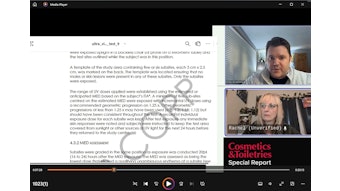

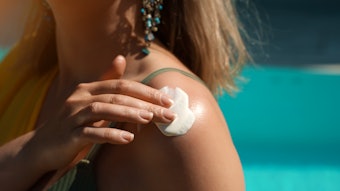


!['[Sunscreen] developers will be able to innovate more efficiently while maintaining high standards of quality and safety for consumers.'](https://img.cosmeticsandtoiletries.com/files/base/allured/all/image/2024/06/woman_outside_using_sunscreen_on_face_ISO_test_standards_AdobeStock_783608310.66678a92029d9.png?auto=format%2Ccompress&fit=crop&h=191&q=70&rect=62%2C0%2C2135%2C1200&w=340)
